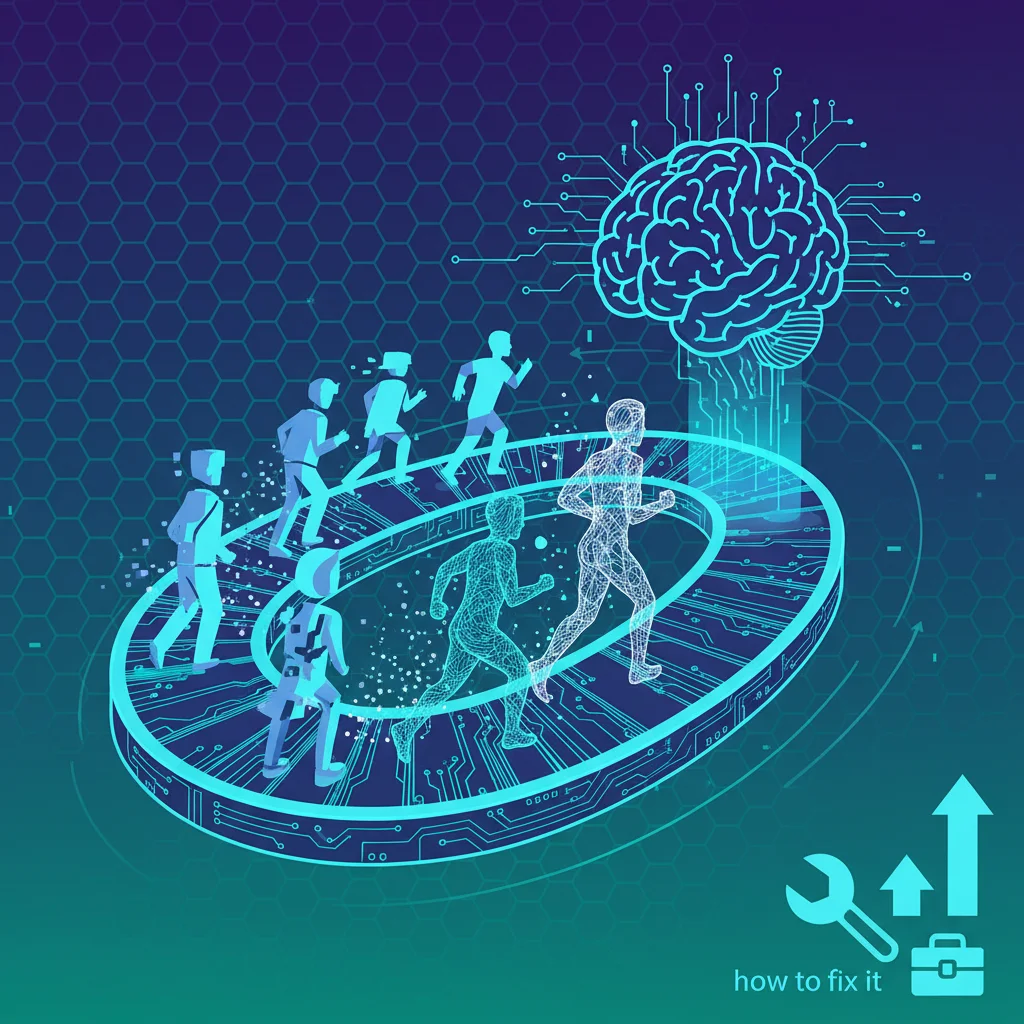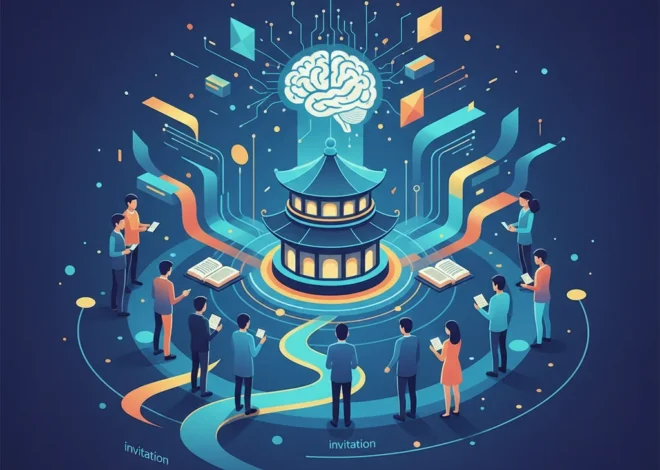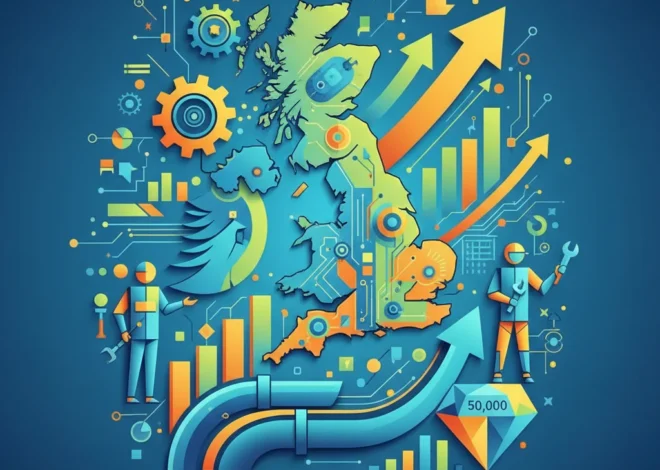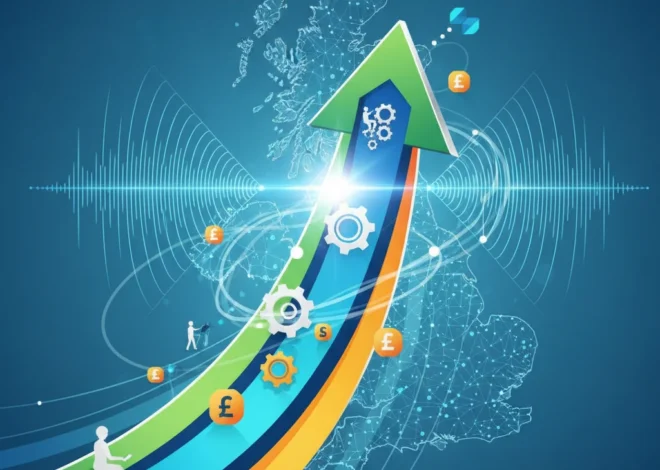
The AI Treadmill: Why Your Team’s Skills Are Already Obsolete (And How to Fix It)
Imagine this: You’ve just invested a significant chunk of your budget into a six-month, company-wide training program on the latest and greatest in artificial intelligence. Your team is finally up to speed on state-of-the-art models, prompt engineering, and implementation. You lean back, satisfied. Then, a news alert flashes across your screen: a new, paradigm-shifting AI architecture has just been released, rendering half of your brand-new curriculum outdated.
Sound familiar? If it doesn’t yet, it will soon. Welcome to the AI treadmill. It’s moving at a blistering pace, and for businesses, the choice is simple: keep up, or get thrown off.
The relentless pace of AI and machine learning innovation is creating a corporate crisis. The traditional “train-and-done” model is dead. Companies that treat AI upskilling as a one-time event are not just wasting money; they’re actively eroding their competitive edge. The real challenge isn’t just learning about AI; it’s building an organization that can learn at the speed of AI.
The Great AI Training Paradox
Businesses are not blind to the AI revolution. In fact, they are pouring unprecedented resources into getting their workforce ready. Professional services giant PwC, for example, is making a monumental $1bn global investment to enhance its AI capabilities, which includes training its entire 25,000-strong UK staff on generative AI. This is a clear signal that the C-suite understands the stakes.
But here lies the paradox: despite massive spending, many companies are struggling to see a tangible return on their training investment. Why? Because the “half-life” of technical skills has collapsed. A programming language skill might have been relevant for five to ten years in the past. Today, a specific skill related to a popular AI framework might be superseded in 18 months or less. For cutting-edge generative AI techniques, that window could be as short as six months.
The old model of learning simply can’t keep up. It’s like trying to fill a leaky bucket—by the time you’ve taught one skill, another has already become obsolete. This calls for a fundamental shift in our approach, moving from static, event-based training to a dynamic, continuous learning ecosystem.
To illustrate the difference, consider this comparison between the old and new paradigms of corporate education:
| Traditional Training Model | Agile Learning Ecosystem |
|---|---|
| Structure: Formal, scheduled courses (e.g., bootcamps, workshops) | Structure: On-demand, integrated into workflow (e.g., micro-modules, wikis) |
| Pacing: One-size-fits-all, curriculum-driven | Pacing: Personalized, learner-driven, “just-in-time” |
| Goal: Knowledge acquisition and certification | Goal: Skill application and continuous improvement |
| Content Source: External vendors or internal L&D department | Content Source: Crowdsourced from internal experts, curated external resources |
| Metric of Success: Course completion rates | Metric of Success: Project impact, speed of innovation, problem-solving |
The table makes it clear: we’re moving from a “push” model, where knowledge is pushed onto employees, to a “pull” model, where employees can pull the exact knowledge they need, precisely when they need it.
The Billion Handshake: Why Tech Giants Are Pouring a Fortune into AI's Physical Backbone
Beyond the Code: The New AI Power Skills
Another critical mistake many organizations make is focusing their AI training solely on the technical side—the deep dives into Python, TensorFlow, and complex algorithms. While these skills are vital for the developers building the models, they represent only one piece of the puzzle. The true value of AI is unlocked when the entire organization, from sales and marketing to HR and legal, understands how to leverage it.
This requires a new suite of “AI power skills” that are less about programming and more about strategy, creativity, and critical thinking:
- Strategic Prompting: This is far more than just typing a question into a chatbot. It’s the art and science of structuring queries to elicit nuanced, accurate, and creative outputs from generative AI models. It’s a skill that blends logic, creativity, and domain expertise.
- AI-Powered Critical Thinking: As automation handles more routine tasks, the human value shifts to evaluating the AI’s output. Is this summary biased? Does this data prediction make logical sense? Can I trust this code suggestion? The ability to critically analyze and validate AI-generated content is paramount.
- Ethical & Governance Acumen: Every employee using AI tools must be a steward of responsible AI. This means understanding the basics of data privacy, recognizing potential biases in algorithms, and knowing the cybersecurity risks associated with feeding sensitive company data into external SaaS platforms.
- Workflow Integration & Design: The biggest productivity gains come from seamlessly weaving AI into existing workflows. This skill involves identifying opportunities for automation, redesigning processes around AI capabilities, and using AI as a collaborative partner rather than just a simple tool.
As Tomas Chamorro-Premuzic, a professor of business psychology, notes, the most significant changes are happening in “non-technical jobs.” He argues that 90 per cent of the value of generative AI will come from empowering these roles, not just the tech experts.
Learning from the Leaders: Case Studies in Adaptation
How does this new model look in practice? We can look to forward-thinking organizations for clues. Boston Consulting Group (BCG) provides a powerful example of “eating your own dog food.” The firm developed its own generative AI tool and is using it to train its own consultants. This approach is brilliant because it embeds learning directly into the daily workflow. Consultants learn by doing, applying AI to solve real-world client problems, which is infinitely more effective than abstract classroom learning.
PwC’s strategy of training its entire UK workforce highlights another crucial principle: democratization. By giving everyone a baseline understanding of AI, they are creating a common language and fostering a culture where innovative ideas for using artificial intelligence can emerge from anywhere in the organization, not just the data science department.
For startups and smaller companies without a billion-dollar training budget, the principles remain the same, but the execution can be leaner:
- Peer-to-Peer Learning: Host weekly “AI Show & Tell” sessions where team members share a new tool they’ve discovered or a clever prompt they’ve engineered.
- Micro-learning via ChatOps: Integrate learning into platforms like Slack or Teams. Use bots to share daily tips, short video tutorials, or quick quizzes on new software features.
- Internal Hackathons: Dedicate one day a month for a company-wide hackathon focused on solving a specific business problem using new AI tools. This fosters hands-on experimentation in a low-risk environment.
The Code War: Why Europe's Military Needs a Silicon Valley Reboot
Your Blueprint for Building a “Forever-Learner” AI Team
So, how do you get off the AI treadmill and start building a resilient, adaptable learning culture? It requires a deliberate, strategic effort. Here is an actionable blueprint to get you started:
1. Architect a Learning Ecosystem, Not a Curriculum:
Stop thinking in terms of courses and start thinking in terms of resources. Invest in a centralized, easy-to-search knowledge hub (a modern wiki or internal portal) that houses everything from expert-led video tutorials and case studies to user-generated guides and best-practice documents. This becomes a living library that evolves with the technology.
2. Embrace “Just-in-Time” Micro-learning:
No one has time for a three-day workshop when they’re on a deadline. Break down complex topics into bite-sized, five-to-ten-minute modules that a developer or marketer can access the moment they encounter a problem. This could be a short video on a new API endpoint or a quick guide to using an AI image generator for social media posts.
3. Foster Psychological Safety for Experimentation:
Employees won’t experiment with new tools if they fear failure or criticism. Leaders must actively encourage curiosity. Create sandboxed environments where teams can test new AI and cloud services without risking production systems. Celebrate the “intelligent failures” that lead to valuable lessons.
4. Gamify and Incentivize Learning:
Shift performance metrics to reward learning and knowledge sharing. This could involve creating leaderboards for completing learning modules, offering small bonuses for employees who contribute to the internal knowledge base, or publicly recognizing individuals who pioneer new AI-driven workflows.
5. Lead from the Top:
Cultural change must be modeled by leadership. When executives openly share what they are learning, how they are using AI tools in their own work, and even their own learning struggles, it sends a powerful message that continuous learning is a core company value, not just another corporate mandate.
Beyond the Zap: How AI and the Cloud are Transforming the Taser
The Ultimate Competitive Advantage
In the rapidly accelerating world of artificial intelligence, the most durable competitive advantage is not your current tech stack or your team’s existing skills. It’s your organization’s metabolic rate of learning—its ability to absorb, adapt, and apply new knowledge faster than the competition.
The goal is no longer to “complete” AI training. The goal is to build a learning machine of people to manage the machine learning revolution. By shifting from static training events to a dynamic learning ecosystem, you can get off the treadmill and start leading the race.


